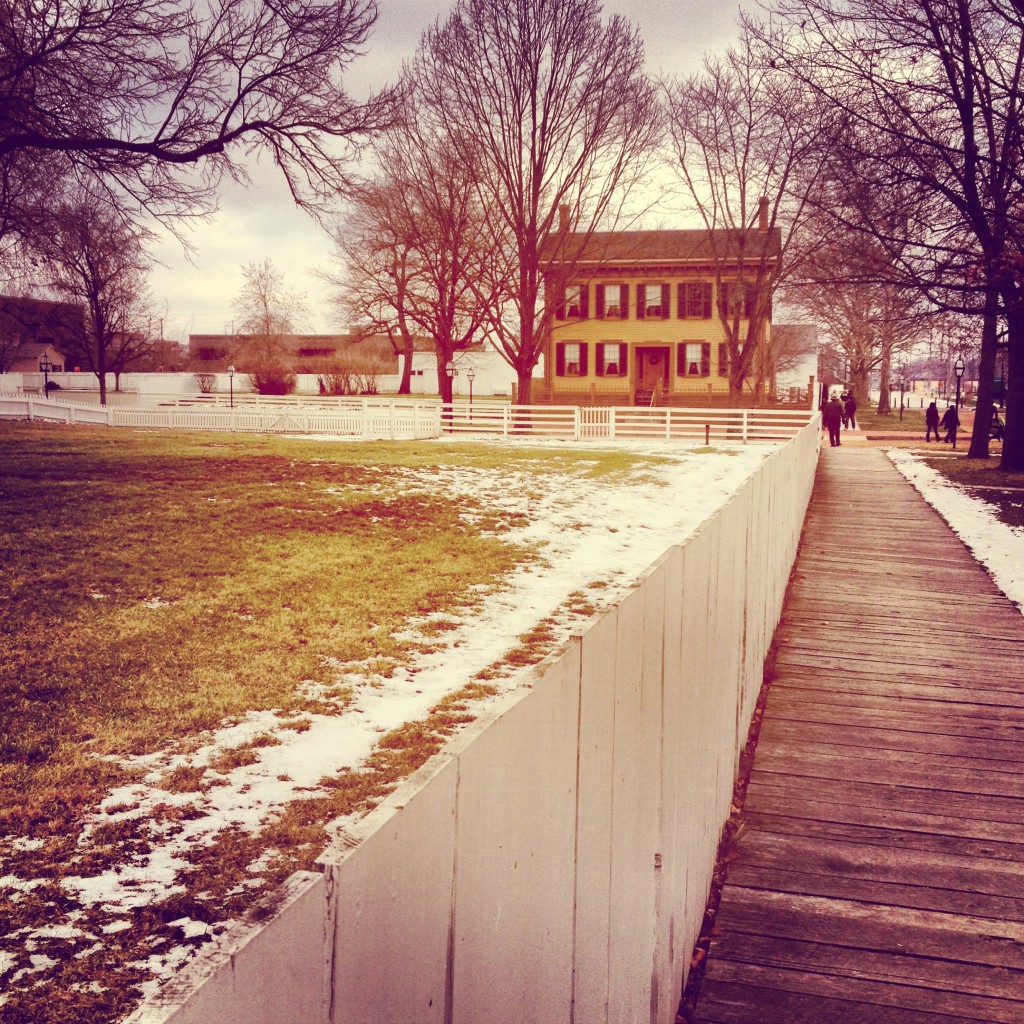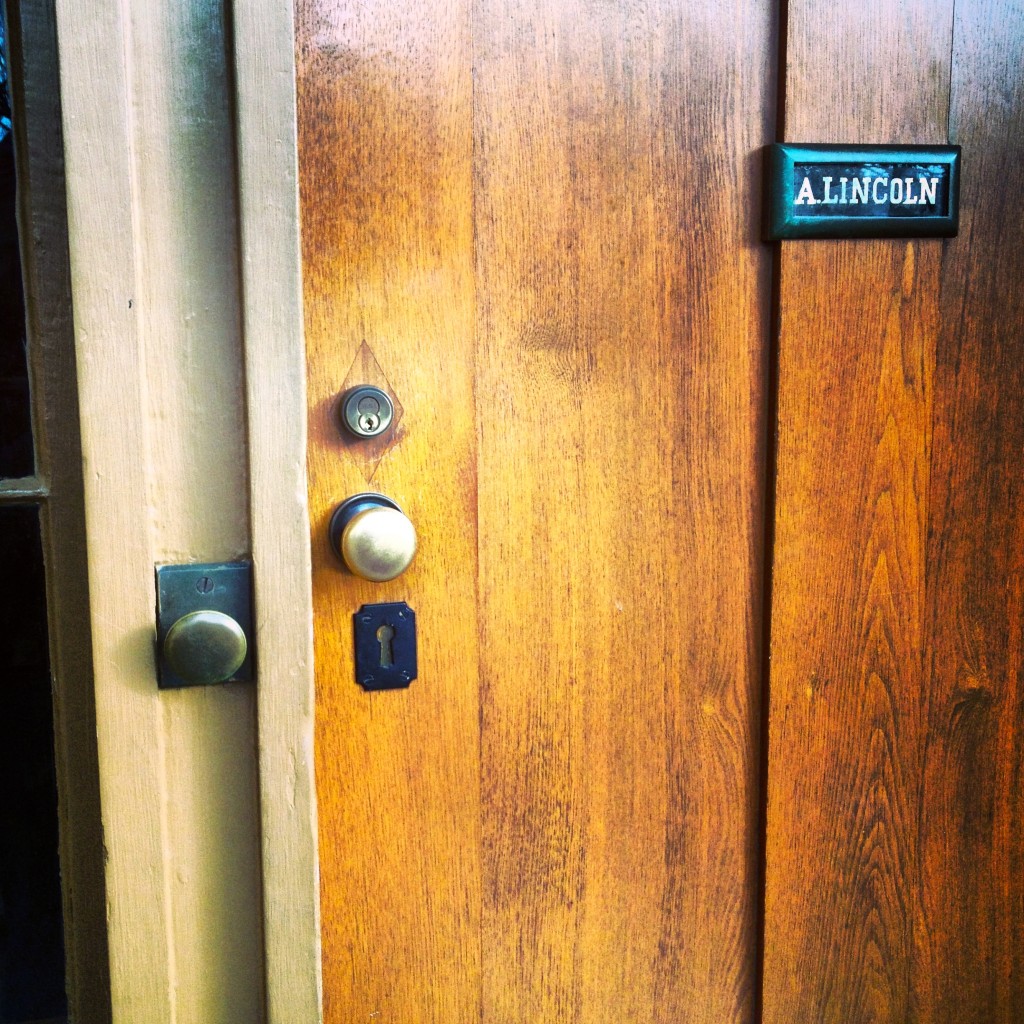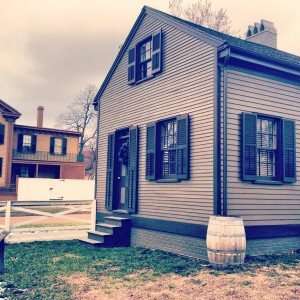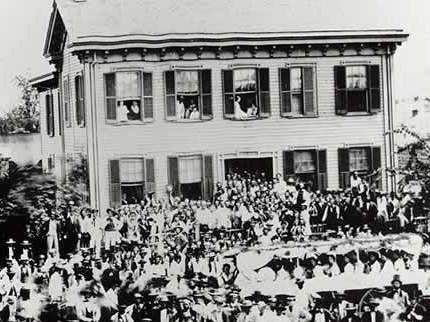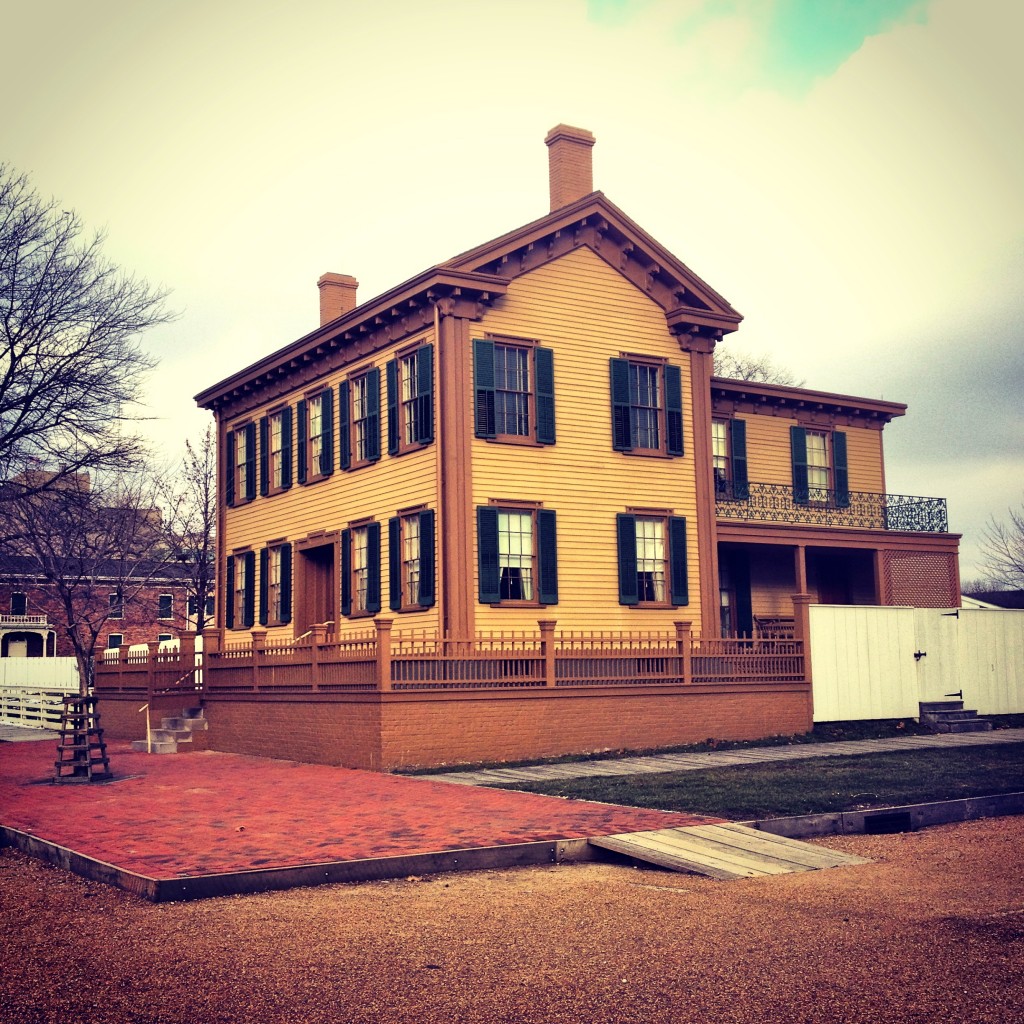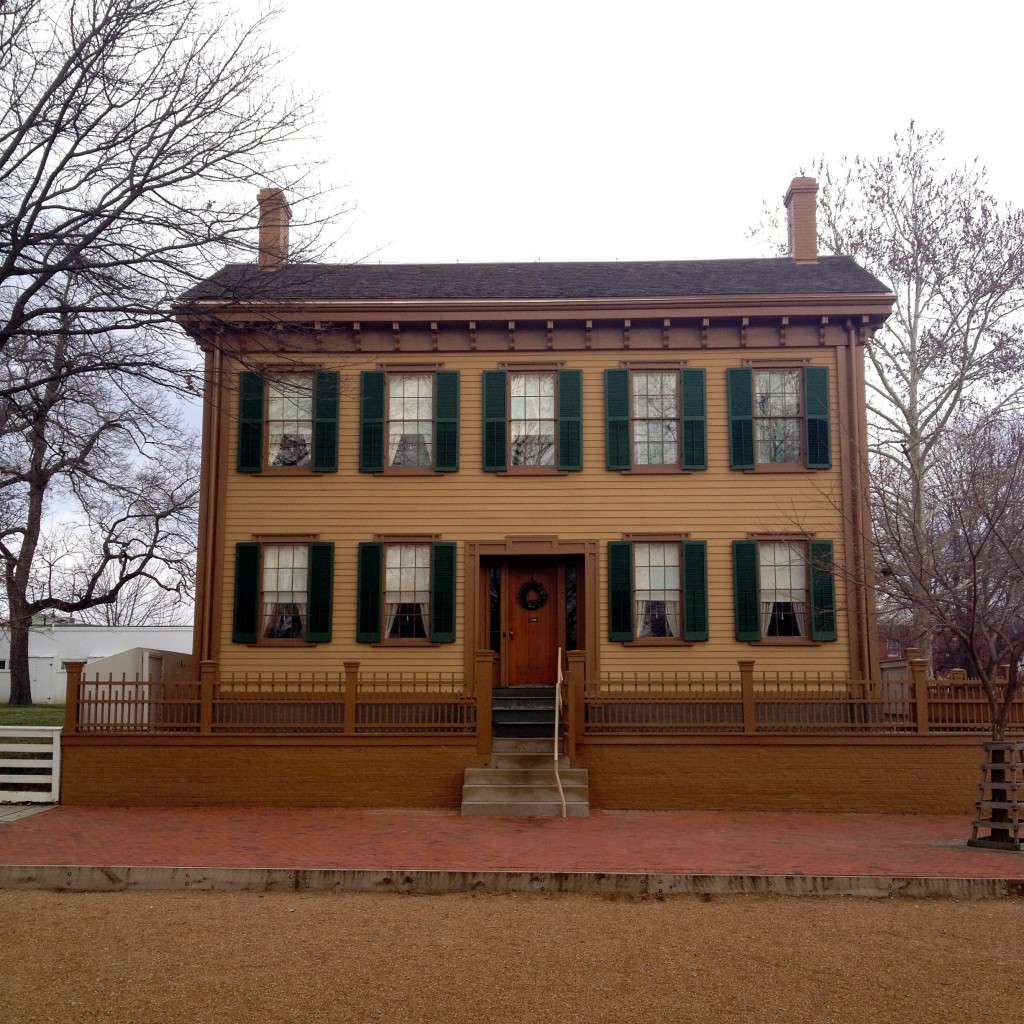You don’t really know someone just because you’ve seen the inside of their home. But maybe you know them better. A few weekends ago, Adam and I went to Springfield to see the Lincoln Museum. If you haven’t heard yet: It’s amazing. You should go see it. While you’re there, have yourself a “Horseshoe,” which is Springfield’s local dish: an open-faced meat sandwich covered with fries and beer-cheese sauce.
Yum. Anyway, back to Lincoln.
The Park Service maintains The Lincoln Home, down the street. I went to go check it out. Almost everything inside belonged to the Lincolns. Their beds. Their kids’ toys. Their chairs and tables. Their kitchen stove (Mary did most of her own cooking). Their… chamberpots. One of their kids, Eddie, died in this house a month before his 4th birthday.
People didn’t really have house numbers back then – just their name on the door.
The house made Lincoln seem like a real person to me. That’s a cliche, I know. But seeing his stuff… there was just something about it. The ordinary edges of his and Mary’s life. Two people, four kids, three servants, his job, a dog and some cats, their friends, and their stuff.
It makes me want to go see the movie again.
Springfield has preserved the homes in a four-block square around their house, too, so you get a feel for the whole neighborhood.
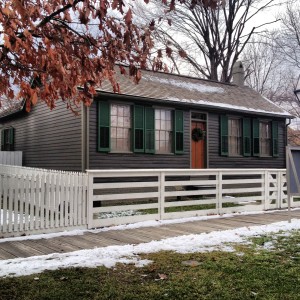
The house itself it typical 19th century: there was a public parlor, with horsehair chairs and other fancy bits. They liked to give parties and dinners there. There was a family parlor, where Abe used to lie on the floor and read (he was too tall for most furniture at the time), which apparently, Mary used to scold him about. He’d also roughhouse with the boys there, and play with their cats and dog. They eventually had separate, adjoining bedrooms upstairs, a sign of comfort and being well-to-do, not emotional distance. There was a room for a servant girl (which seemed like an incredible vulnerable position to me, right down the hall from the men of the house), a guest room, and a room for the boys. There was no plumbing, and still isn’t (you can use the facilities at the visitor’s center, down the block). The outhouse was in the back of the yard, with three seats. The kitchen was tiny, although as the guide put it, “This kitchen is about the same size as the log cabin Abe Lincoln grew up in. He came a long way in the world.”
Here’s a picture of the house during the presidential campaign of 1860.
Another fun fact: The Lincolns bought their house from an Episcopal priest! It was just one story at that time, and they “renovated” and added a second story a few years later.
While you can’t know a person just by visiting their home, it is a window onto who they are. Not just how messy or clean the house is, or how well-matched the furniture is, or whether the bathroom needs updating, but just… it’s your stuff. I think something intangible from us rubs off on them.
I don’t mean to make it sound magical. I’ve visited other official “homes,” and they’re ok. But something about this one — the Lincolns really lived here for fifteen years, and their stuff is still here. It’s not “what it might’ve been like,” it’s a window onto their life and themselves.
This blog is about home and where we live, and how that affects who we are. Particularly, it’s a journal about the place I live – Bolingbrook, Illinois. The places we live rub off on who we are and we rub back.
If you ever get a chance, go to Springfield and see the Museum and the Home. I hear the Lincoln Law Offices are great, too (we forgot to do our homework, and only found out they were closed on Sundays when we showed up).
